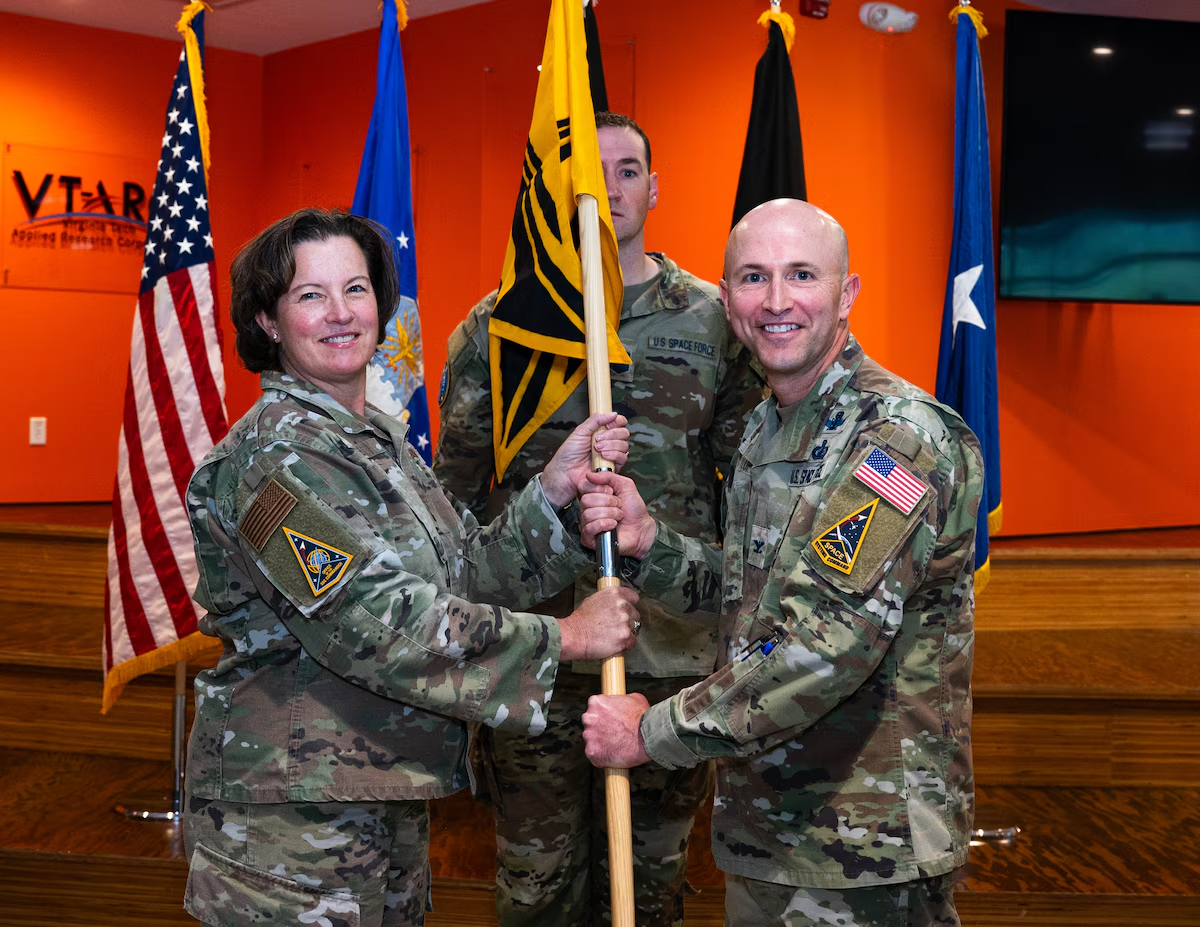Space Force developing new cloud-based digital environment for training

As part of the Space Force’s effort to modernize its test and training infrastructure, the service is building a new digital range that will eventually connect disparate units and capabilities to allow for realistic, large-scale training.
The capability — dubbed “Swarm” — is in nascent development, but envisioned as a multi-classification digital environment where guardians from various units can come together against simulated adversaries. According to Maj. Gen. Timothy Sejba, head of the service’s Space Training and Readiness Command (STARCOM), early versions of Swarm were built for the Space Force’s primary mission planning and operational support exercise series known as Space Flag.
“The Space Flag that we just completed here about a month and a half ago, many of the threats that we faced were simulated in that environment,” Sejba said Thursday during a webinar hosted by the Mitchell Institute. “You had crews from across the Space Force that were actually executing over a two-week period to understand how they would actually perform in the environment.”
Sejba noted that the environment is currently only available to STARCOM on-prem, and that the service is focused on delivering the “initial aspect of Swarm” by the end of 2025. At the same time, the Space Force is planning to move the capability to the cloud sometime in the next two years so it can scale the size and scope of its future training and test exercises, he added.
“We’re quickly building not only the red threats that we need to represent, but also all of the blue systems that are coming online over the next several years,” Sejba said. “Then we’re quickly moving it to the cloud so we can get to a distributed training capability that allows each of those guardian units to actually be able to [train] from their home stations, but do it over and over.”
That means guardians from multiple units in different locations can simultaneously train in the simulated environment and prepare for more complex threats, such as fighting against multiple adversaries at once, he noted.
Swarm is part of the Space Force’s broader effort to modernize and build out its training infrastructure — a task that is both one of Chief of Space Operations Gen. Chance Saltzman’s top priorities and a significant challenge for the Pentagon’s newest service. The service’s flagship development program is the Operational Test and Training Infrastructure (OTTI), which seeks to combine digital, cyber and live-training ranges under one system.
Developing OTTI from scratch, however, has been a challenge. Sejba highlighted that while the other services have had decades to build their test and training infrastructures, the Space Force has only had a few years to do so.
STARCOM also recently divided the OTTI effort into two distinct paths, Sejba noted. One tackles the need for a distributed training capability that is being built out by Swarm, while the other focuses on developing a high-fidelity, realistic simulation environment — a system akin to the Air Force and Navy’s Joint Simulation Environment (JSE), which is used to train pilots for complex combat scenarios.
“Something like JSE is something that we will eventually need. I would argue we probably need it sooner rather than later so that we’ve got our own capability to do some of this high-end testing [and] training,” Sejba said. “When I explore something like JSE, in that kind of environment you can very quickly translate that to what that might look like for space and the kind of high-end training that you’d be able to do for guardians in the near future.”
Sejba acknowledged that a limited budget likely means it will be several years before STARCOM has a true JSE-like training environment, but the Space Force is in the meantime leveraging prior work done by the Air Force and Navy to develop the system.
“We know what it’s going to take to be able to adopt that environment,” he said. “We’ve done plenty of research to see if that’s the right environment for us to go forward with, and we certainly know what some of the other services need also from a space effects standpoint.”






